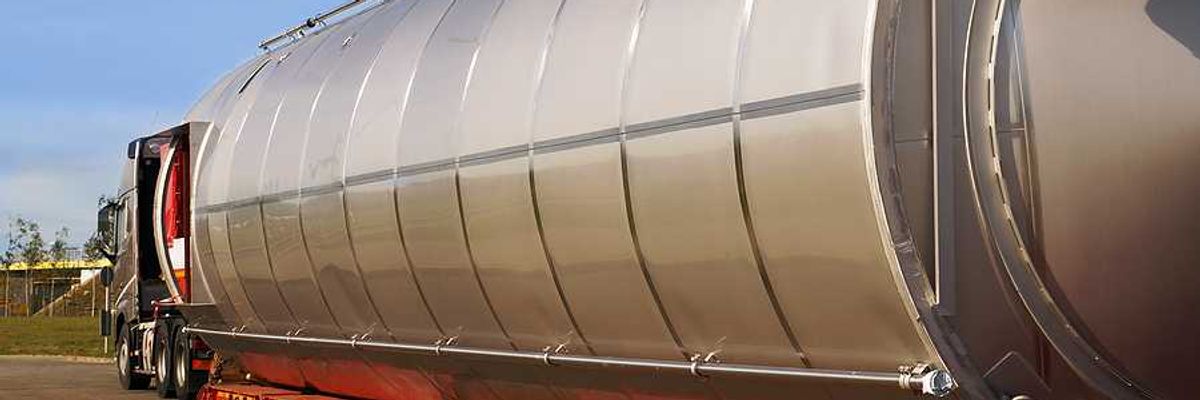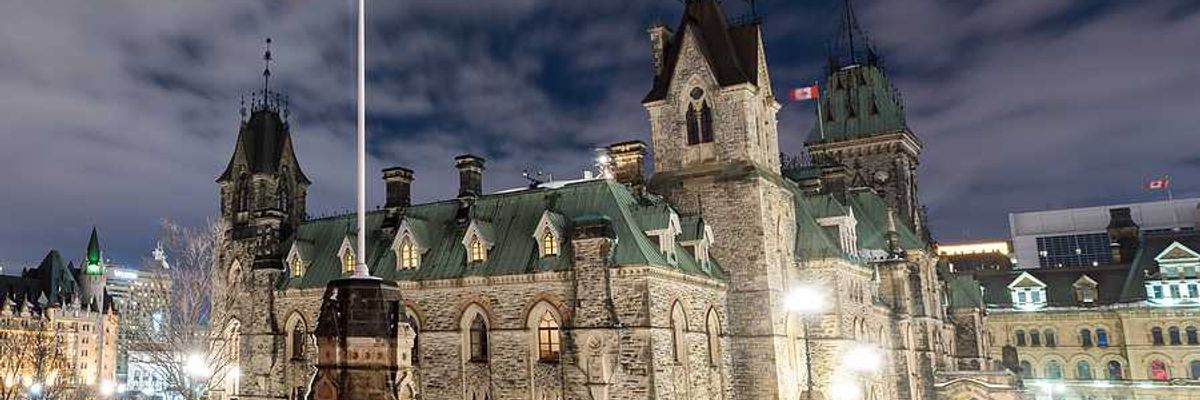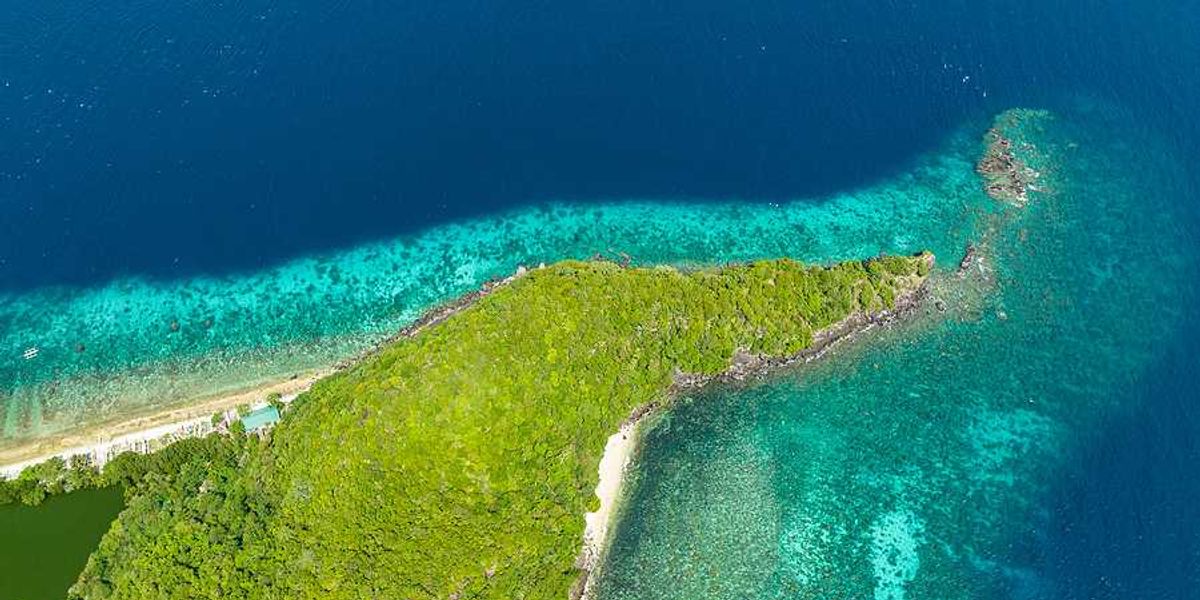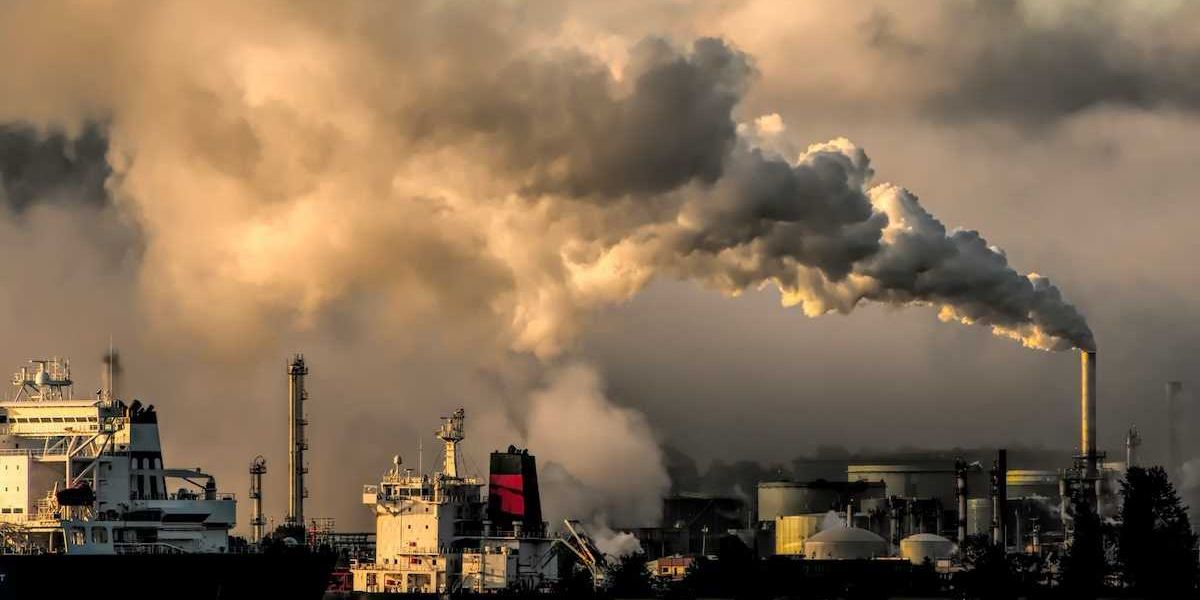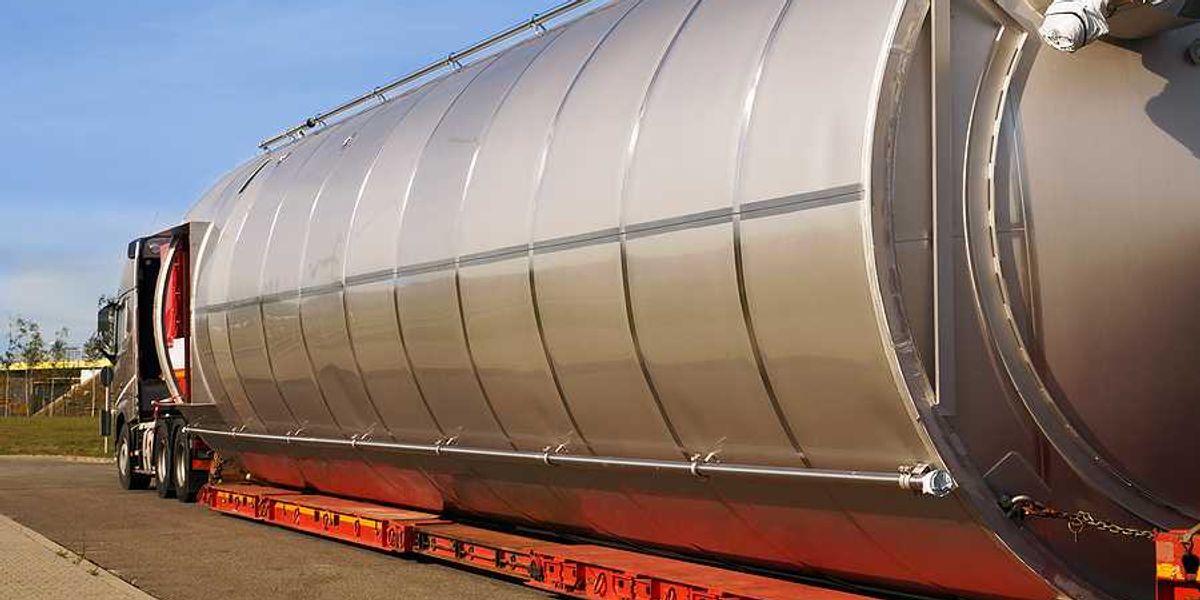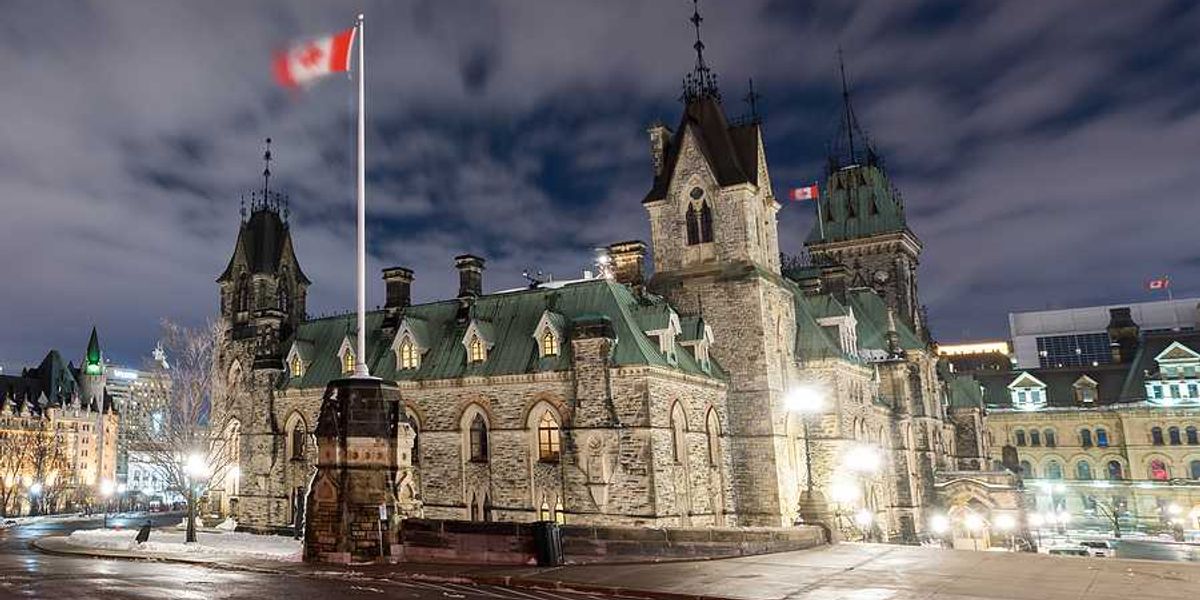coal_bed_methane
Millions flow to Wyoming to plug orphaned oil and gas wells
The brutal legal odyssey of Jessica Ernst comes to an end
The challenges of change: Diversification may prove difficult for Wyoming, experts say.
From alfalfa to cattle, tourism to plastic princesses, the desire to diversify has a long history in Wyoming, but the winning market has long been energy.
Before World War II, it was aviation. Planes heading from one coast to another needed a stopover, and Cheyenne was on the safest route across the Continental Divide. Boeing and American Airlines had offices there, and the first of the well-mannered, manicured and uniformed airline stewardesses were trained in Wyoming’s state capital.
Then the war came, bringing with it new technologies and better planes. The stopover in Cheyenne was left behind like an old railroad hub miles from a new interstate highway.
In the ‘70s, some said Wyoming could be home to the next big manufacturer of Barbie dolls. From alfalfa to cattle, tourism to plastic princesses, the desire to diversify has a long history in Wyoming, but the winning market has long been energy.
For all the effort — or at least, stated effort — to diversify Wyoming’s economy over the years, some say it just can’t be done.
Can it be done?
Colorado School of Mines professor Graham Davis said that if the Cowboy State was going to become a hub for non-extractive industries, that already would have happened.
“I can tell you there have been many, many regions and nations that have tried to diversify away from natural resources through planning exercises,” Davis said. “None have succeeded.”
He said Colorado, a state that moved from mining oil, coal and precious metals to boasting a variety of major industries including high-tech, did not take concerted steps to diversify its economy.
“It’s just market forces,” Davis said.
Denver, San Francisco and many other metropolitan centers in the United States were creations of gold rushes or other mining booms — essentially random events that can lead to a thriving region.
Wyoming’s borders were effectively drawn in the 1860s as an act of corporate welfare meant to subsidize the railroad.
Union Pacific was building the transcontinental railroad through southern Wyoming due to its relatively flat grade and easy access to coal deposits. But the region was part of the Dakota Territory at the time, with a Legislature based hundreds of miles away in Yankton, adjacent to Iowa.
“We set up a government here because the Union Pacific railroad needed a government that was closer than Yankton,” said University of Wyoming economics professor Anne Alexander.
“This was the first place that they made a state for a corporation,” Alexander said.
Even then, businessmen in Wyoming were facing the same problem that the state faces today: how to draw people and businesses to the state and how to sell what Wyoming had, said Gov. Matt Mead.
Unlike Colorado and other states that were created around clear economic hubs, Wyoming had to find its own way toward financial viability.
The coal deposits were seen primarily as fuel for the railroads and would not find a major national market until the 1980s. Oil grew in importance as automobiles became popular in the early 20th century. Agriculture and tourism, meanwhile, had always been around.
The main sources of lucrative, blue-collar jobs in Wyoming have long been natural resources. No other industry has come close.
“Market forces say productive activities go where it’s most profitable to do so,” Davis said.
And, Davis added, those forces have not brought much to Wyoming other than extractive industries — and it is unlikely the government can do anything about that.
Mead differs on that point.
“It’s always a combination of ‘We have wonderful assets — how do we maximize those?’” he said. “We can no longer sit and wait and hope for the world market to give us that place. We have to grab what we have and make our own better days.”
More, better energy
In the current bust, the call to diversify has a hint of panic. The challenge is one of awareness in some cases.
“How do we make the world know that we are open for business?” Mead said.
Wyoming could again look to fossil fuels as a way to grow the economy, but with an eye to the future, he said.
Though oil, gas and coal face enormous pressure because of worldwide concern about carbon dioxide and methane emissions, those sources are still valuable.
Wyoming’s School of Energy Resources at UW was created to look at some of these new possibilities.
Mead and the state Legislature invested millions in a cost-share with the industry for the Wyoming Integrated Testing Center, which broke ground last year. Using the Dry Fork Station coal-fired power plant as a guinea pig, the center will host competitions and research into carbon capture technology, or how to grab carbon dioxide emissions from burning coal.
Others see carbon capture as a small part of what research can do for Wyoming’s existing energy sources — research that could move oil, gas and coal away from the turbulent supply and demand of the electricity and fuel markets, said Rob Godby, director of the Center for Energy Economics and Public Policy at the University of Wyoming.
“If we really want to see value in our coal resource, Dry Fork is a step,” Godby said. “But I think a lot of people are coming around to the opinion that really we should be thinking about coal as an alternative hydrocarbon source.”
Coal can be used in carbon fiber structure — considered the future of construction materials as fewer builders use steel.
Much of industry supports this idea of added value.
“Gas is such a cool molecule, it shouldn’t be wasted on electrical power,” said Cary Brus, senior vice president for Nerd Gas. “You can do so much stuff with gas … You can use it for all kinds of other raw materials, plastics, all these things that we take for granted every day.”
Better use of commodities is the way of the future, Godby said. However, though that’s more accessible than a booming tech industry in Cody or Casper, it still doesn’t solve Wyoming’s economic diversification dilemma.
Wyoming can’t just supply coal and gas to other states where they are refined and used. Those refineries, those industries and that new workforce need to be located here, he said.
Some smaller firms offer a model for how businesses outside the energy industry could thrive in Wyoming. McGinley Orthopaedic Innovations, a medical device manufacturer in Glenrock, has hired roughly two dozen workers. Their ranks include machinists, welders and others who once made their living in the energy sector.
But the scale of those efforts, which provide stable employment, still pale in comparison to the economic engine that is Wyoming’s extractive industry. And in that sense, Wyoming remains where it started, a geographically remote market with a small workforce that is dependent on energy production, Godby said.
A universal challenge
Alaska, another state where jobs and tax revenue depend primarily on energy, has likewise struggled to diversify.
Pause
Current Time 0:00
/
Duration Time 0:00
Loaded: 0%Progress: 0%0:00
Fullscreen
00:00
Mute
Clive Thomas, a longtime economist of the state who now teaches at Washington State University, said Wyoming and Alaska have much in common and will both likely continue to flounder in efforts to attract other high-paying industries.
“Alaskan politicians, especially those who have never taken a politics class, think that somehow if they have the right policies — and get rid of this government or that government — that Alaska can diversify its economy,” Thomas said. “It can never do that.”
Thomas addressed the attempts to draw technology startups to the state, an effort that has also been pushed by business development groups in Cheyenne.
“Who’s going to move from San Francisco to Anchorage, which is a pit hole?” Thomas said. “Who would want to do that?”
Like Davis, the Colorado School of Mines professor, Thomas said that it was unlikely that government alone would be able to convince businesses that special opportunities existed in their states.
“Investors would have found them,” Thomas said.
He said that states across the Mountain West had been unsuccessfully seeking to develop economies to compete with places like California and New York for decades.
“If there was a way to do it, people would have figured it out,” he said.
Thomas and Davis both take a more skeptical approach toward the need for economic diversification, saying that Wyoming’s population is free to move in and out of the state depending on conditions in the energy industry.
It might hurt Wyoming if a worker relocates from Casper to Denver or, say, Philadelphia for a higher-paying job, but Davis noted that from an economic perspective, that would be seen as a positive move for the country.
“It’s good if someone can find a good-paying job on the East Coast; they should go for it,” Davis said. “We don’t see that as misery.”
Wyoming, however, does.
Why diversify?
Even economists who believe in the need for diversification emphasize the importance of figuring out the end goal of changing the economy.
“You have to be reasonably clear on why you want economic diversification, because that, to some degree, answers the question,” said Center for Global Development fellow Alan Gelb, who works with overseas countries looking to move away from dependence on natural resources.
Some countries are worried about job creation; others are concerned that too much of their budgets are tied up in commodities with wildly fluctuating prices.
He said that Botswana, a diamond-exporting country near the southern tip of Africa, has many similarities to Wyoming: It has a small population spread across a large territory, it’s home to relatively few people with advanced college degrees, its semi-arid climate makes agriculture difficult and it is forced to compete against neighboring countries with better infrastructure and more established economies.
Despite the government’s best efforts, diamond mining continues to dominate the economy in Botswana.
“In a case like that, there is a real question as to what else the economy can do,” Gelb said.
His answer — and the one adopted by some countries that have realized they will never be able to offer a variety of good-paying jobs — is to invest in human capital.
“Make sure your people can earn their livings anywhere in the world,” Gelb said.
Wyoming already invests heavily in its education system and it is easy for a University of Wyoming graduate to move elsewhere in the United States for work.
The state’s challenge is keeping young people in the state after school. About 60 percent move elsewhere, Mead said.
Alexander, the University of Wyoming economist, said the state also needs a more stable economy if it hopes to keep the social contract that governments enter into with citizens.
“The government is supposed to not just dictate our lives but provide us with services,” she said. “People like the cops to come when they’re called. They like the fire department to come. They probably want a reasonable transportation system.”
That all costs money. And even if residents can settle in and leave Wyoming depending on the number of energy jobs, it costs roughly the same amount of money to provide a police force for a city of 50,000 people as it does for 40,000 people. The roads between Cheyenne and Casper need to be maintained at basically the same level even if 25 percent of Wyoming’s population leaves during an energy downturn.
“These are all things that are really difficult to provide if you don’t have predictable revenue flow,” Alexander said.
Alexander said that not only is steady revenue necessary to provide stability during periods of industry downturns, but a diverse economy is also needed to ensure Wyoming’s economy can grow outside of the wild booms that tax the state’s infrastructure and social services.
That’s important because if Wyoming hopes to retain its young people, it needs to offer them compelling careers, something that is only possible if it branches beyond extractive industries.
Gov. Mead said that many Wyomingites see it differently. Rather that a state without a solid economic base that struggles to retain its young population, they see one of rich natural resources, wide vistas and a high quality of life. People from Wyoming, and people who migrate to Wyoming, do so because of the quality of life.
“We could just sit back — fine — and the only people who will remain here will be the people who really want to be here,” Alexander said.
But if Wyoming simply accepts that its population will fluctuate with the whims of the energy industry, Alexander said the holdouts who remain in the state will be required to either bear a higher tax burden or make due with government services far below what their peers receive elsewhere in the United States.
“There’s only so long you can ask people to do that,” she said.
“The best and the brightest and most talented who might have grown up in your backyard in Hanna or Worland or Meeteetse (will) have no incentive to stay here and that puts you in a death spiral.”
Alexander did not dispute that Wyoming’s small population, lack of a large metropolitan center and relative isolation made it difficult to diversify the economy. But she said that doing so was still possible.
“We have to look really carefully at what we have,” Alexander said. She cited Wyoming’s small-scale manufacturing and agriculture products industry as source of skilled labor.
Alexander also praised Gov. Matt Mead’s proposed ENDOW program, which would offer job training and other incentives to create a more skilled workforce.
The governor has asked the Legislature to fund $2.5 million for the initiative. More than half will go to community colleges.
If lawmakers were to refuse the funding, the 20-year project would go on, but be severely crippled, said Jerimiah Rieman, the governor’s director of economic diversification strategy and initiatives.
“There are challenges, big ones, massive ones,” Alexander acknowledged. “But you eat the elephant one bit at a time.”
Thirty years in Wyoming energy
1970 - The Environmental Protection Agency is formed and the Clean Air Act passed. The legislation to combat air pollution puts pressure on Appalachian coal producers, but opens the door for Wyoming's Powder River Basin coal to flourish. Wyoming coal is of lesser quality, but significantly cleaner when burned than its eastern cousin.
1979 - Energy crises. After the Iranian Revolution, widespread panic over falling oil supply shocks the market. Price of crude soars.
1986- The high crude price in the early 80s dropped with a resounding boom. Price of oil hits $10 a barrel, around $20 a barrel in todays dollars.
1990 - Irag's invasion of Kuwait briefly spikes price of crude. Kuwaiti oil fields set on fire by Iraqi forces. Most of the 90s are a revenue dry spell for Wyoming, with poor to modest oil, gas and coal prices.
Late 90s - Two laid off oilmen discover coal bed methane, which would lead to a sudden burst in natural gas production in the Powder River Basin, including some 24,000 newly drilled wells.
2000s - New fracking and horizontal drilling techniques unlock gas fields across the country, spiking the shale revolution and a natural gas frenzy in Wyoming. State revenue from natural gas approaches $800 million far outpacing oil and coal.
2015 - The meteoric rise in U.S. oil production helps flood the market. Prices decline rapidly. Natural gas prices continue a downturn that began after a mid 2000 peak with gas surplus nationwide. Coal producers in Wyoming, saddled with debt from bad bets on Asian demand for coal, begin filing for bankruptcy.
2016- OPEC reaches a deal to curb production. Oil price steadies out in a $50 to $60 range. Gas price stabilizes at around $3 on winter demand. Two of three Powder River Basin coal companies to file for bankruptcy, emerge shorn of heavy debt.
Scottish Government launches fracking consultation.
Scottish residents' views sought on unconventional oil and gas extraction ahead of MSP vote later this year.
Scottish residents' views sought on unconventional oil and gas extraction ahead of MSP vote later this year
The Scottish Government has launched a public consultation over whether to allow unconventional oil and gas extraction - including fracking - to take place north of the border.
Launched yesterday, the four-month consultation runs until the end of May, and the Scottish Government then plans to make a recommendation that will go before MSPs for a vote towards the end of the year.
Studies have shown Scotland's geology, and in particular a stretch of land through Scotland's central belt referred to as the Midland Valley, could contain significant quantities of shale gas and oil, and coal bed methane.
However, the central belt is also one of Scotland's most populated regions, supporting important industries and businesses, prompting the consultation to note that the future of fracking in the area had proved "both complex and controversial".
"This has led to a widespread debate on potential environmental, health and economic impacts, and on compatibility with Scotland's ambitious climate change targets," the consultation website states.
A temporary moratorium on unconventional oil and gas development in Scotland has been in place since January 2015 which prevents hydraulic fracking for shale oil and gas, as well as coal bed methane extraction.
The Scottish parliament also passed a motion in support of a ban on fracking last summer, after governing Scottish National Party MSPs abstained from the vote.
The devolved administration said its position was to take a "cautious, evidence-led approach" on fracking - a practice which green campaigners claim can pose a risk to health, communities and the local environment, while also leading to greenhouse gas emissions - while it gathers and considers evidence.
A report by the Independent Expert Scientific Panel as well as a series of research projects have been commissioned to support the consultation, while a dedicated website - talkingfracking.scot - has also been set up.
The move follows draft plans launched by the Scottish Government last week for the country to deliver a fully decarbonised electricity sector by 2032 and cut Scotland's overall emissions by two thirds by 2030. Scotland it also aiming to source half of its energy from renewables by 2030.
WWF-Scotland director, Lang Banks, said any decision to access more fossil fuel reserves through fracking would "fly in the face" of the recently announced renewables and climate targets.
"The climate science is clear," said Banks. "The vast majority of fossil fuel reserves need to be left in the ground and unburned. We expect Scottish Ministers to reflect this fact in their final decision."
Elsewhere in the UK, fracking has controversially been given the go-ahead in Lancashire and North Yorkshire after court battles, while Labour said last year that it would ban fracking in the UK if it wins the next election.
Scottish government to make fracking decision in 2017.
The government is mulling over whether to allow the controversial oil and gas extraction technique in Scotland, with a moratorium currently in force.
The Scottish government hopes to make a decision on whether to allow fracking in the second half of 2017.
The government is mulling over whether to allow the controversial oil and gas extraction technique in Scotland, with a moratorium currently in force.
Energy Minister Paul Wheelhouse told MSPs that a "precautionary, evidence-based approach" would continue.
A public consultation based on newly published studies will be launched in January, before any decision is made.
At the same time, the government will publish its climate change plan and commission a full strategic environmental assessment.
Nicola Sturgeon's government commissioned a series of independent research projects when it imposed a moratorium on fracking in January 2015, the conclusions of which have now been published.
Unconventional oil and gas (UOG) extraction has proved a controversial topic, with some political parties and green groups arguing it causes environmental damage, while others point to economic benefits.
Holyrood voted to support an outright ban on fracking in June, although SNP members abstained from that vote, and Labour has launched a members bill with the same aim.
But Mr Wheelhouse said the government would not be "gung-ho" and had committed to consulting on the evidence collected.
He said: "The extensive package of research published today will ensure the public has access to a comprehensive evidence base on the potential health, economic and environment impacts of UOG ahead of the launch of the Scottish government's public consultation in the early New Year.
"These studies are an important contribution to the examination of the potential impacts of unconventional oil and gas technologies and underline the Scottish government's precautionary, robust and evidence-based approach to UOG."
Mr Wheelhouse was pressed by Conservative MSPs on the timescale for a decision, with claims the government was "incapable of making a tough decision".
The minister said there would be a four-month consultation period starting in January and hoped to have the process complete in the second half of 2017.
Pressed further by Willie Rennie, Mr Wheelhouse said there would be a parliamentary vote on the matter.
He anticipated a "lively debate" and added: "I will intend to do that by the end of 2017."
'Inadequate' evidence
The research published included a public health impact assessment, although Health Protection Scotland concluded that "the evidence considered was inadequate as a basis to determine whether development of shale oil and gas or coal bed methane would pose a risk to public health".
As well as the health study, five commissioned research projects were published, on the topics of:
Economic impacts
Climate change
Decommissioning, site restoration and aftercare
Understanding and monitoring induced seismic activity
Community level impact on transport
The reports found that there would be an increase in traffic for a number of years due to industrial activity were fracking permitted, but that the probability of "felt earthquakes" was "very small".
The economic report laid out a series of different scenarios, with anything from 470 to 3,100 jobs potentially created, and value added to the Scottish economy to 2062 anywhere from £100m to £4.6bn.
Labour's Jackie Baillie questioned whether these "relatively low" figures were worth a risk to the environment. Mr Wheelhouse said he wanted to take a "rounded view" and "let the people tell us what they think is more important".
Shale gas is currently shipped to Scotland from the US for use at the Ineos petrochemical plant in Grangemouth.
The firm's chairman Jim Ratcliffe has claimed fracking could transform the UK's industrial heartlands.
It's now over to you - the public
Analysis by BBC Scotland politics reporter Philip Sim
There are precious few bombshells in the fracking reports released today.
They found "inadequate" evidence to draw a firm conclusion on health impacts, while the economic impact could apparently land anywhere in an enormous window from £100m to £4.6bn.
Both sides will find things to claim as a win among the stack of documents and labyrinths of small-print.
Pro-frackers can point to the sunnier economic forecasts, and the "very small" risk of earthquakes; meanwhile anti-fracking groups have already pounced on lines about increasing difficulty hitting climate targets and the gloomier economic projections.
With such a selection-pack of fudge on offer, it's hardly surprising the government remain firmly on the fence.
This is another step down the road, though. The government hope to come to a conclusion on fracking by the end of 2017, but want to hear from you, the public, first.
Expect the public consultation input from all sides to be composed in infinitely stronger terms than today's study reports.
Friends of the Earth Scotland said the research had delivered a "damning verdict" on fracking.
Head of campaigns Mary Church said: "The economic case for pursuing an unconventional gas industry in Scotland simply doesn't stand up, while the risks of doing so could be utterly devastating for communities and the environment. No state has had a moratorium on fracking, looked at the evidence and decided it's a good idea."
WWF Scotland director Lang Banks added: "Looking at the three tests posed by the government's own independent climate watchdog, it's very hard to see how Scotland could go ahead with fracking without breaching its carbon targets.
"According to the independent research, the direct emissions from the production process of an unregulated fracking industry alone could potentially add more than 10 per cent to our current annual climate emissions. And that's before you consider the climate science, namely that the vast majority of known global fossil fuel reserves need to be left in the ground."
'Dithering and delay'
Labour and the Scottish Greens have set themselves in opposition to fracking, and the Lib Dems support a ban despite their conference calling for current restrictions to be lifted.
The Scottish Conservatives have spoken in favour of fracking in the Holyrood chamber, while other groups, including trade unions, have also voiced support.
Tory energy spokesman Alexander Burnett said: "We have more dithering and delay and a failure to recognise an opportunity to boost the economy and create jobs at a time when the North Sea oil and gas industry is in decline.
"Ministers already commissioned expert scientific advice, which found that fracking can take place safely provided the right regulatory regime is in place. However, they chose to ignore that for political reasons. Today we have yet more evidence, but this government seems incapable of making a tough decision."
Labour's Claudia Beamish said ministers "had an opportunity to ban fracking, but look set to kick it into the long grass", asking why the SNP were "dragging their heels on a decision".
What is fracking and why is it controversial?
Fracking is the process of drilling down into the earth before a high-pressure water mixture is directed at the rock to release the gas inside.
The extensive use of fracking in the US, where it has revolutionised the energy industry, has prompted environmental concerns.
The first is that fracking uses huge amounts of water that must be transported to the fracking site, at significant environmental cost.
The second is the worry that potentially carcinogenic chemicals used may escape and contaminate groundwater around the fracking site.
But the industry suggests fracking of shale gas could contribute significantly to the UK's future energy needs
Fracking is harmful to health, Scottish Government report says.
Workers could be at risk from breathing in dangerous crystalline silica during fracking operations, one report found, a health risk that could also affect those living near to fracking sites.
A series of new reports published by the Scottish Government have revealed damning evidence of the impacts of shale gas fracking in Scotland.
The government is currently in talks over whether to allow the controversial oil and gas extraction technique to begin in Scotland, having announced a moratorium last year.
An investigation into the potential health effects of fracking found there was “sufficient” evidence to suggest that a number of “air and water-born environmental hazards” would be likely to occur should the operations go ahead.
Workers could also be at risk from breathing in dangerous crystalline silica during operations, the report found, a risk to health that could also affect those living near to fracking sites.
However, the report – one of six to be published – found that there was “inadequate” data to determine whether the development of shale oil and gas or coal bed methane would pose a risk to public health overall.
In his statement to the Scottish Parliament following the publication of the reports on Tuesday, Energy and Climate Change Minister Paul Wheelhouse emphasised the importance of remembering that shale gas and coalbed methane resources are located in the most densely populated part of country.
He told MSPs that a “precautionary, evidence-based approach” would continue.
A public consultation will be launched in January – at the same time as the government’s climate change plan - before any decision is made.
Analysing the impact fracking could have on climate change, experts from the Committee on Climate Change concluded that developing unconventional oil and gas (UOG) would make it harder for the country to meet environmental targets.
Left entirely unregulated, the emissions footprint of unconventional oil and gas production could be substantial,” the report warned.
On the economy, researchers reported it was “unclear” if the fracking industry was “commericially viable”, with current low oil prices providing a “challenging” financial climate.
The industry would bring 1,400 direct and indirect jobs to Scotland, contributing an average of 0.1 per cent GDP and a direct spend of £2.2bn up to the year 2026.
Increases in traffic could also result in more noise and emissions in the affected areas.
The Scottish Parliament voted to support an outright ban on fracking earlier this year after SNP members abstained.
Last week, the British Government was accused of ignoring its own climate change experts in order to allow the “fracking floodgates to open across the country”.
Speaking on the publication of the reports, Mr Wheelhouse said Scotland would not tackle the debate with the same “gung-ho approach of UK Ministers”, and that the Scottish consultation would give “everyone who has an interest” an opportunity to express their views.
Friends of the Earth Head of Campaigns Mary Church said: "Fracking is bad for the climate, bad for public health and won't do much good for the economy. That's the damning verdict of the independent studies published by the Scottish Government today, echoing the concerns of communities across the country.
"The economic case for pursuing an unconventional gas industry in Scotland simply doesn't stand up, while the risks of doing so could be utterly devastating for communities and the environment. No state has had a moratorium on fracking, looked at the evidence and decided it’s a good idea.
"Support for fracking is at an all-time low. People just don't want this dirty, dangerous industry. We are confident that when the Scottish people are given a chance to have their say in the forthcoming Government consultation, the answer will be a resounding 'no' to fracking."
Tale of two tribes: Utes want to drill as Sioux battle pipeline.
While the Standing Rock Sioux have drawn considerable media coverage for their fight against the Dakota Access Pipeline project, the Southern Utes have attracted scant attention for their 15-year push to make it easier to drill on Indian land.
Catherine Traywick
October 12, 2016 — 7:00 PM EDT Updated on October 13, 2016 — 4:06 AM EDT
Share on FacebookShare on Twitter
Southern Utes seek to break U.S. shackles on tribal land use
With 1,600 wells drilled, tribe is one of America’s richest
Share on Facebook
Share on Twitter
The Southern Ute Indian Tribe of southwestern Colorado has a higher long-term credit rating than Wells Fargo & Co., and more oil and natural-gas wells than it has members.
Welcome to the other side of the tribal land energy conundrum.
Standing Rock Sioux members and supporters protest in North Dakota, on Sept. 3. Photographer: Robyn Beck/AFP via Getty Images
While the Standing Rock Sioux have drawn considerable media coverage for their fight against the Dakota Access Pipeline project, the Southern Utes have attracted scant attention for their 15-year push to make it easier to drill on Indian land. Their goal: Extend financial opportunities that have already given them control of 1,600 wells across four states, and helped make them one of the richest tribes in the U.S.
“Without a prolonged effort to take control of our natural resources, the Southern Ute Indian Tribe would not be the economic powerhouse it is today,” Tribal Council Treasurer James Olguin told lawmakers in a congressional hearing last week. “We are the best protectors of our own resources and the best stewards of our own destiny.”
Lobbying Push
Since 2012, the Southern Ute tribe has spent $1.6 million lobbying Washington to ease energy permits, ensure tribal sovereignty and lighten U.S. Interior Department rules on fracking and methane emissions, according to the Senate’s Lobbying Disclosure Act database. That’s three times more than Pioneer Natural Resources Co., a shale driller with more than $32 billion in market value.
While the Standing Rock Sioux vowed last week to keep fighting the Dakota Access Pipeline after a federal court declined to halt construction, the Southern Utes met with U.S. lawmakers in Santa Fe, New Mexico, to argue for new laws loosening federal control over their drilling operations. They were joined by representatives of the Navajo Nation, the largest U.S. tribe, and the Arctic Slope Regional Corp., owned by Alaska natives.
The three groups called on Congress and the Interior Department to streamline permitting on Indian lands and give tribes more control over energy leasing and environmental reviews.
The argument resonated with some Republican lawmakers.
Old Notions
“Nearly every aspect of energy development on tribal lands is influenced or controlled by the federal government, a policy stemming from old notions that Indian tribes are incapable of or unwilling to manage their resources,” Utah Republican Rob Bishop, chairman of the House Natural Resources Committee, said during the hearing.
For Democrats, environmental concerns outweigh questions about sovereignty. Last year, only 11 Democratic representatives voted in favor of legislation to streamline tribal energy permitting.
The Southern Ute reservation, tucked into Colorado’s San Juan Basin, sits atop one of the most productive coal-bed methane gas fields in the country. The tribe manages energy resources through the Red Willow Production Co. It was founded in 1992 to develop wells on the reservation, and has expanded into the Delaware Basin in Texas, the Green River Basin in Wyoming and the Gulf of Mexico.
Little Big Horn
The tribe has had a long and complex history with the U.S. government.
Tribal chiefs during Roosevelt’s 1905 inaugural parade. Source: Library of Congress
A Ute named Yellow Nose was credited with killing General George Custer at the Battle of Little Bighorn in 1876, according to a tribal history. Four years later, following two key battles that left dozens on both sides dead, the tribe’s leader Ouray traveled to Washington for treaty negotiations that cost the Utes tribal land. In 1905, then-chief Buckskin Charley met President Theodore Roosevelt in Washington, and rode in his inaugural parade.
More recent efforts to influence policy have yielded limited success. Congress has passed bills to streamline the permitting process on tribal lands and trim project delays. That’s a positive step, the tribe has said, but it doesn’t address a fundamental problem: the federal government treats tribal lands as public lands, exercising the same level of oversight as over national parks.
“Some of it is historic artifact,” said Eric Henson, a fellow at the Harvard Project on American Indian Economic Development. “It wasn’t that long ago that the non-tribal world viewed tribes as incompetent, incapable, unable to manage their own affairs. So we have this treaty framework where we say ‘We’ll take care of it for them.’”
Competitive Disadvantage
That puts tribes at a competitive disadvantage, the tribe’s argument goes: Why invest in tribal lands, requiring years of costly environmental review and a lengthy permit process, when you can be in operation elsewhere within weeks?
Colorado typically issues drilling permits within two months of receiving applications, and charges no permit fee. To drill on Southern Ute land, the U.S. Bureau of Land Management charges a $9,500 fee and on average takes seven months to process permits on public lands. In the case of tribes, there may be additional delays related to the Bureau of Indian Affairs’s role in the permitting process.
That’s problematic for development, the Harvard Project’s Henson said. While some tribes have access to considerable oil and gas reserves, few develop them, hindered by a lack of capital and technical experience, or waylaid by the permitting process.
Tax Base
For tribes rich in natural resources, energy production can create the tax base needed to provide crucial services for members.
James Olguin Source: Natural Resources Committee
Olguin emphasized this at last week’s hearing. “Today, the tribe provides health insurance for its tribal members, promises all members a college education and has a campus dotted with state-of-the-art buildings," he said at the hearing. This is "despite the federal government’s stifling role in Indian energy development.”
Tribal officials say the Obama administration is attuned to Native Americans’ concerns, as evidenced by its response to the controversial Dakota Access pipeline. Shortly after a U.S. district court denied a request to stop construction of the $3.8 billion project, the Obama administration halted work on the contested stretch of land.
But tribe-sanctioned production of fossil fuels remains a quagmire for the administration, which has adopted a strong stance on climate change.
"There’s tension even within the Obama administration on the issue of tribal sovereignty," said Thomas Shipps, legal counsel to the Southern Ute Indian Tribe. "Especially when exercising that sovereignty involves the development of fossil fuels."

